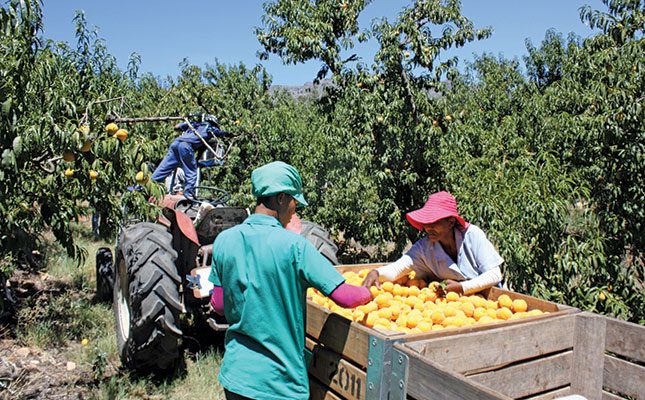Improving workers’ skills is essential to increasing production efficiency and improving staff morale, and lies entirely with the farmer, who is ultimately the custodian of food production. Indeed, fulfilling this role responsibly requires ensuring that farmworkers undergo ongoing training, says Janine Ryan.
The importance of farmers upskilling their workers cannot be overstated, as it brings numerous benefits to workers and farmers, as well as the sustainability of the agriculture sector as a whole.
By upskilling their workers, farmers can improve efficiency, embrace new technologies, promote sustainability, ensure product quality and safety, adapt to market demands, plan for the future, and enhance worker satisfaction. These benefits contribute to the overall success and competitiveness of the farm while fostering a sustainable and thriving agriculture sector.
Efficiency and productivity
Upskilling workers enhances their knowledge and skills, enabling them to perform their tasks more efficiently and effectively. With improved techniques, workers can streamline operations, optimise resource utilisation, and increase productivity. This, in turn, leads to higher yields, reduced costs, and improved profitability.
Technological adaptation
Agriculture is becoming increasingly technology-driven, with innovations such as precision farming, data analytics and automated machinery playing a vital role. By upskilling their workers, farmers ensure that they have the necessary skills to operate and leverage modern agricultural technologies. This helps farmers stay competitive, embrace new production methods, and maximise the benefits offered by advancements in the sector.
Sustainability and environmental stewardship
Upskilling workers can promote sustainable farming practices and environmental stewardship. Through training, farmers can educate their workers on conservation techniques, soil management, water conservation, integrated pest management, and other sustainable farming methods. By implementing these practices, farmers can reduce their environmental footprint, preserve natural resources, and contribute to long-term sustainability in agriculture.
Quality and safety standards
Training and upskilling workers can improve the quality and safety standards of agricultural products. Workers who are knowledgeable about best practices and quality standards can ensure that crops are harvested, handled and stored properly, minimising post-harvest losses and maintaining product quality. Additionally, trained workers are more likely to follow safety protocols, reducing the risks of accidents, injuries, and foodborne illnesses.
Adaptation to market demands
The agriculture sector is subject to evolving market demands, including changing consumer preferences, regulations, and certifications. By upskilling workers, farmers can adapt to these demands more effectively. For example, workers can learn about organic farming practices, fair trade certifications, or new market opportunities, enabling farmers to diversify their offerings and meet consumer expectations.
Succession planning
Upskilling workers is crucial for succession planning in agriculture. As older farmers retire, the next generation or new workers need to be equipped with the necessary skills and knowledge to take over operations successfully. By investing in training and upskilling, farmers can ensure a smooth transition and the continued success of their farms.
Staff morale
Upskilling workers also improves motivation at the workplace, with increased job satisfaction. Through upskilling their workers, farmers demonstrate a commitment to their workers’ professional development.
As with other industries, workers who feel valued and supported by their employers are more likely to stay in the business for the long term, displaying loyalty and commitment to the operation. This reduces staff turnover and associated costs. Upskilling can also provide workers with opportunities for career advancement within the agriculture sector.
Whom should you upskill?
While upskilling workers offers many benefits, it does come at a cost. For this reason, farmers need to select those workers they think are best for upskilling. This does not necessarily point to any person in particular, but rather the needs of the business. The farmer should identify the training needs of the business and where the skills are lacking, and ask whether upskilling workers in this part of the business will benefit the operation.
The first step is to assess the current skills and knowledge gaps within the workforce, and identify areas where improvement is needed, whether it be specific farming techniques, technological advancements, safety protocols, or regulatory compliance. This can be done through performance evaluations, feedback from workers, or consulting with agricultural experts.
Once the farmer has assessed and identified the gaps in the business, he or she needs to develop a training plan. This should outline the specific skills to be addressed, the training methods to be used, and the resources required. It should also include a timeline, setting realistic goals and milestones for the upskilling process. This is important for the farmer and the workers involved, as setting goals enables everyone to monitor their progress.
After developing a training plan, farmers can upskill their workers through various means. On-the-job training is an effective way to upskill workers, as it involves practical training. Experienced and skilled workers can act as mentors to newer or less-experienced employees. This encourages knowledge transfer, fosters a culture of learning within the farm, and sets the scene for succession planning.
Farmers can also leverage external training resources so that workers can learn from experts in a particular field. This can involve partnering with agricultural universities, extension services, vocational training centres, or industry associations.
These organisations often offer workshops, seminars, and courses tailored to the specific needs of the agriculture sector. Additionally, online platforms and educational resources can provide flexible and accessible training options.
Cultivating a culture of continual learning within the business is also important. Farmers should encourage workers to stay updated with the latest developments in agriculture through reading industry publications, attending conferences or webinars, and participating in professional development programmes.
They should also promote knowledge-sharing among workers by organising regular meetings, workshops, or farmers’ days where employees can exchange ideas, experiences and best practices.
If there appear to be no apparent training gaps in the business, a farmer should consider less traditional avenues of training. For example, as agriculture becomes more competitive, it may be worthwhile to train a worker in marketing and/or sales.
It is also important for farmers to embrace technology and digital literacy, and to provide training for their workers in digital literacy and the use of agricultural technologies. This includes training workers to operate and maintain farm machinery, use precision farming tools, and leverage data analytics for decision-making.
Familiarity with technology not only improves efficiency, but prepares workers for the future of agriculture.
Farmers can also consider upskilling their workers by providing safety and regulatory training. Safety training is of paramount importance in agriculture due to the inherent risks associated with farm operations.
Farmers should train workers on safety protocols, equipment operation, and emergency response procedures. Workers should be educated about pesticide handling, proper use of protective equipment, and safe practices when working with livestock or heavy machinery.
They should also receive training on relevant regulatory requirements, such as food safety standards or environmental regulations.
Farmers can also encourage cross-training and skill diversification, allowing workers the ability to become more versatile and adaptable. Providing opportunities for workers to learn new skills and gain exposure to different aspects of farm operations will not only strengthen the workforce as a whole, but prepare employees to take on additional responsibilities, particularly during peak seasons or in case of staff shortages.
What to do next
After initiating training opportunities for their staff, farmers need to evaluate whether
the training is indeed improving worker performance, productivity, and overall farm operations. This needs to be done via regular feedback sessions, performance evaluations, or conducting post-training assessments. Adjustments can be made to the training plan based on the evaluation results, ensuring continual improvement.
Finally, farmers should ensure that they recognise and reward employees’ learning achievements in order to motivate staff, foster an atmosphere of learning, and encourage even further upskilling.




